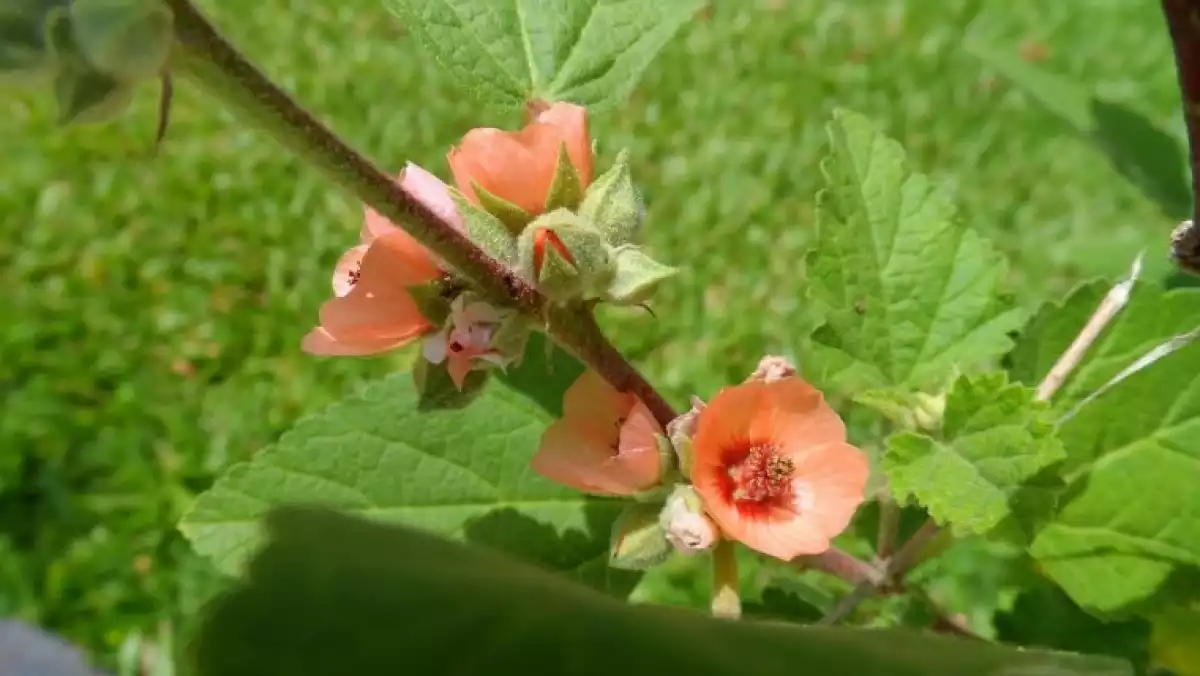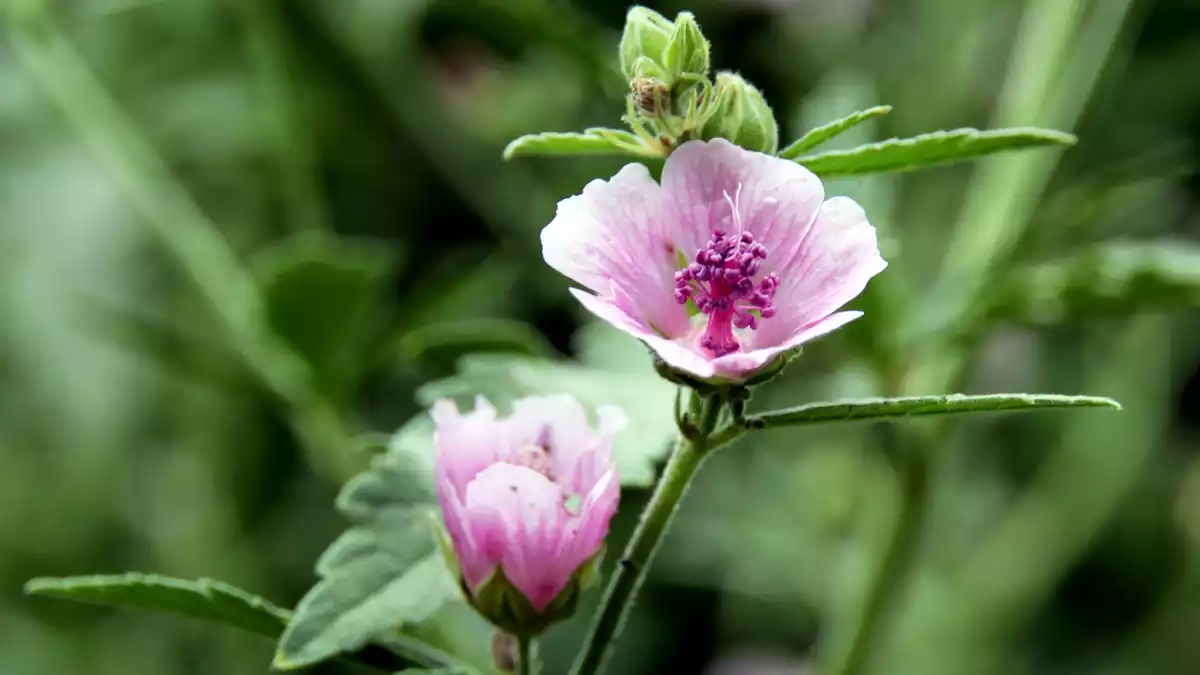
Humankind discovered the marshmallow plant more than 3,500 years ago, and over the course of this time, humans have discovered its powerful medicinal properties: from a pain reliever and anti-inflammatory agent to a cough remedy or an instrument in healing wounds.
Here we reveal the uses and benefits of the marshmallow root, grown since ancient times for its therapeutic qualities.
What is a marshmallow plant?
The Marshmallow plant (Althaea Officinalis) is also known as Althea or marsh mallow. This herb can reach up to two meters high with a straight stem and three-pointed leaves that measure 10 centimeters high and 7 centimeters wide.
This is a Eurasian plant that grows in different regions of Europe. It has an extensive root that continues to grow over time and requires wet soil which is why it tends to grow near lakes and reservoirs: which is how it earned the name "Marsh Mallow."
Ancient civilizations informed us of the incredible benefits of this plant for human beings, especially when applied to cuts and burns as a pain killer and healing agent. Besides, its sweet flavor is incredibly delicious.
Speaking of which, if you want to know where our favorite traditional sweet treat that's great in hot cocoa comes from, we'll explain. Marshmallow candy was invented by the French in the 1800s and required candy shop owners to whip sap from the marshmallow root themselves. But since this was an arduous process, candy makers began using gelatin instead to achieve the same texture without so much effort, and this is how manufacturers of the modern version of this sugary confection make it to this day.
Over the years knowledge of this plant has spread, and among other active ingredients, it contains alkaloids, paraffin, lecithin, B and C vitamins, and minerals like iron, magnesium, calcium, and sodium.
Related: Sarsaparilla: What It Is And Benefits Of This Plant

Marshmallow root benefits
The most noteworthy part of the marshmallow plant is its root where most of its healing properties come from thanks to its mucilage, which is a thick substance that ensures the effectiveness of this plant's main medicinal properties.
These are the marshmallow plant's active ingredients:
1. Healing properties
Marshmallow plant has emollient (reduces corn and tumor inflammation) and demulcent (relieves mucous membrane irritation) properties, which is what makes it the perfect skincare agent and eczema treatment.
But, thanks to these effects, its main benefit is this plant's ability to heal wounds. When applied to burns or injuries like cuts, scratches, or abrasion, it works effectively to relieve pain and regenerate tissue.
It's also a remedy used to treat insect bites, allergic reactions, and as an antiseptic for the throat via gargling.
2. A pain reliever
Marshmallow root's demulcent properties relieve pain in the mucous membranes. In this case, the mucilage, pectin, and sucrose act as sugars that, mixed with water, form a paste that relieves pain and prevents inflammation.
At the same time, this natural mixture prevents infections, killing bacteria in the body. People usually apply marshmallow plant to irritated areas or consume it orally for its properties to take effect.
3. Fights respiratory problems
Mucilage helps to expel mucus from the respiratory system and calms irritation. For those with respiratory problems, this plant can have major benefits.
This plant works to relax the alveoli when it comes to coughing and fights inflammation in the respiratory tract producing a notable sense of relief in the affected subject. Besides, it's a powerful expectorant, which is what makes this plant's root a great natural remedy for asthma.
This root is also used to combat bronchitis because of its properties as a calming agent and expectorant.
4. Helps with urinary tract issues
A process similar to the respiratory system occurs in the urinary tract, which makes the marshmallow plant a powerful agent when it comes to fighting kidney and bladder infections.
When nephritis occurs (a kidney infection) marsh mallow eases pain and works as an anti-inflammatory for the mucous membranes of the kidneys. Besides, this plant helps to disinfect the region, something that's very important in this case.
Also, when a urinary tract or bladder infection occurs, marshmallow root relieves pain and disinfects this area.
Related: Urinary Tract Infection (UTI): Symptoms, Causes And Treatment
5. Digestive problems
Althea is rich in tannins, a herbaceous astringent property, which means that it fights and prevents constipation. Also, in cases of diarrhea, the mucilage acts in the opposite way, helping to stop this affliction.
Marshmallow's digestive properties make it an excellent remedy for gastritis (reducing stomach mucus inflammation), stomach ulcers, acidity, inflammation, intestinal infections, and intoxication.
6. Marshmallow plant for memory
To add to the list of this plant's therapeutic effects, those that struggle with their memory can benefit from marshmallow. This root contains choline, found in vitamin B and lecithin, which makes it an effective natural remedy to aid in the formation of neurotransmitters.
These neurotransmitters send nerve impulses to the muscles and favor the transmission of these in neural activity. This promotes brain function, which is why it's used for those with memory problems, like Alzheimer's disease, and even on a therapeutic level for those with bipolar disorder.

Marshmallow root uses
Typically, people consume Althea as marshmallow tea, orally, or apply it topically with a poultice. How it's applied varies by case and depends largely on the area that requires treatment.
For burns, wounds, and external inflammation, topical application directly to the skin is most common. In this case, a mixture of marshmallow powder and water is made, or you could boil the roots of the plant for approximately 10 minutes.
In the case of internal infections, respiratory, urinary, and digestive issues, or to promote brain activity, marshmallow root is ingested orally as an infusion. To take advantage of its antiseptic properties for the throat, you can gargle this tea.
So, to make marshmallow tea, bring its root to a boil and once it reaches this point, turn down the heat and let it continue to boil for 10 minutes. Then, remove it from the heat and let it sit for 10 more minutes. Strain the liquid and then it's ready to serve. Avoid drinking more than three cups of this infusion daily.
Also, another natural remedy to get rid of a cough is boiling the leaves of this plant to make an herbal tea.
In addition to all of this, you can also make marshmallow syrup. To do this, you need to let it marinade in water for 24 hours. First, put an ounce of marshmallow root in a liter of fresh water, and then, after add 150 grams of sugar, and bring it to a boil. Once this cools off, you can store it in a glass jar.
For more on making marshmallow syrup, read here.
Contraindications and toxicity
One of the things that you should take into account when consuming marshmallow plant is that it has interactions with other medications which is why you should talk to your doctor about how this herb could interfere with your treatment plan.
Beyond this, there haven't been any cases of allergic reactions or poisoning reported, although doctors advise against consuming more than three cups per day of this infusion. People with diabetes or at risk of getting it should be very careful with this plant because of its high sugar content.
Check out the original article: Planta Malvavisco: propiedades y efectos curativos at caracterurbano.com

